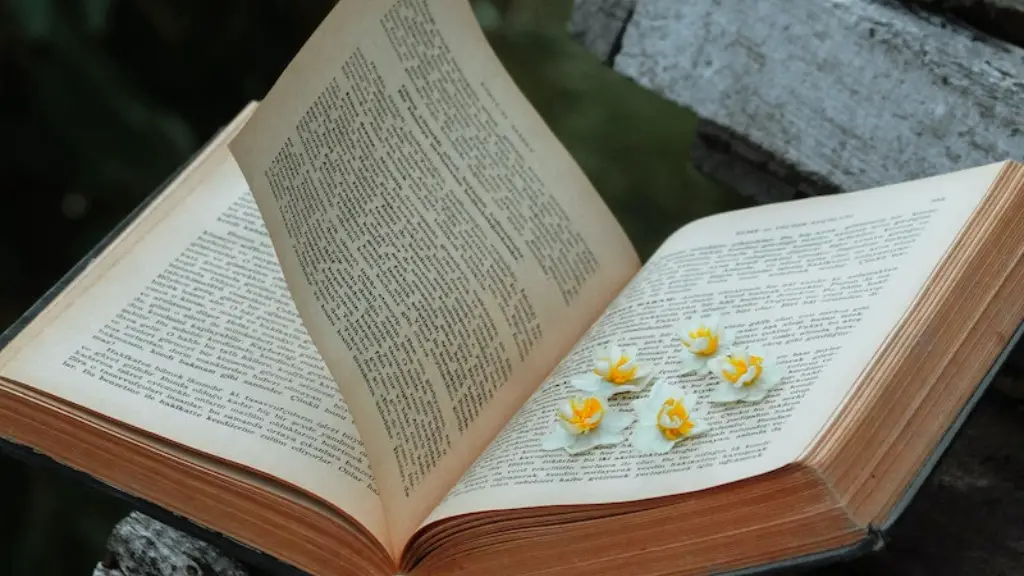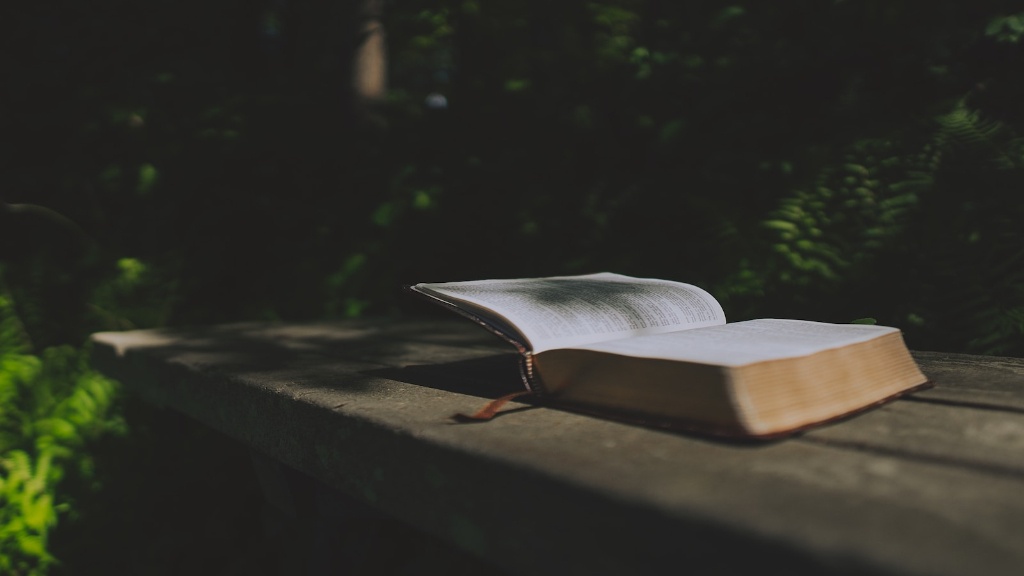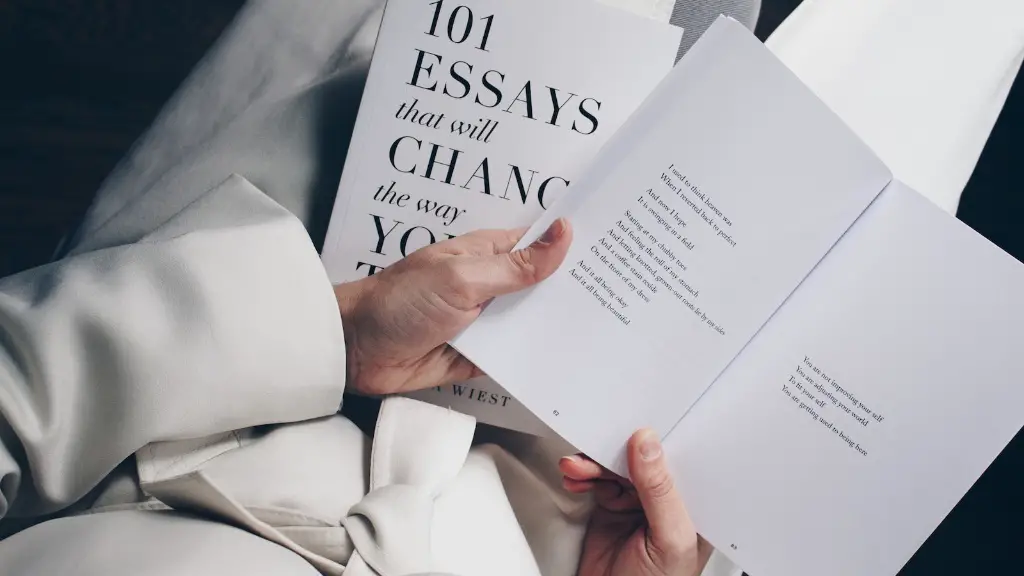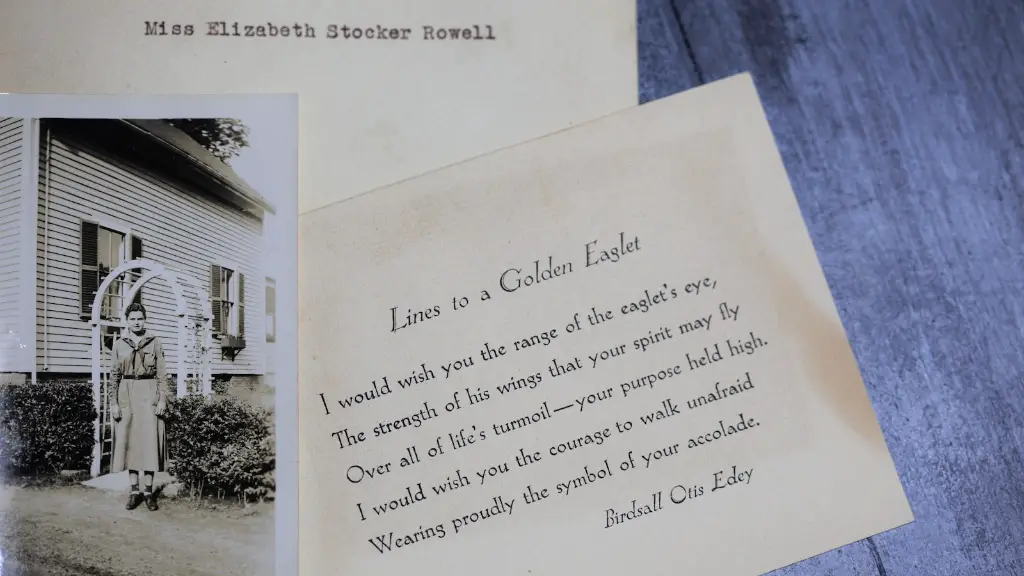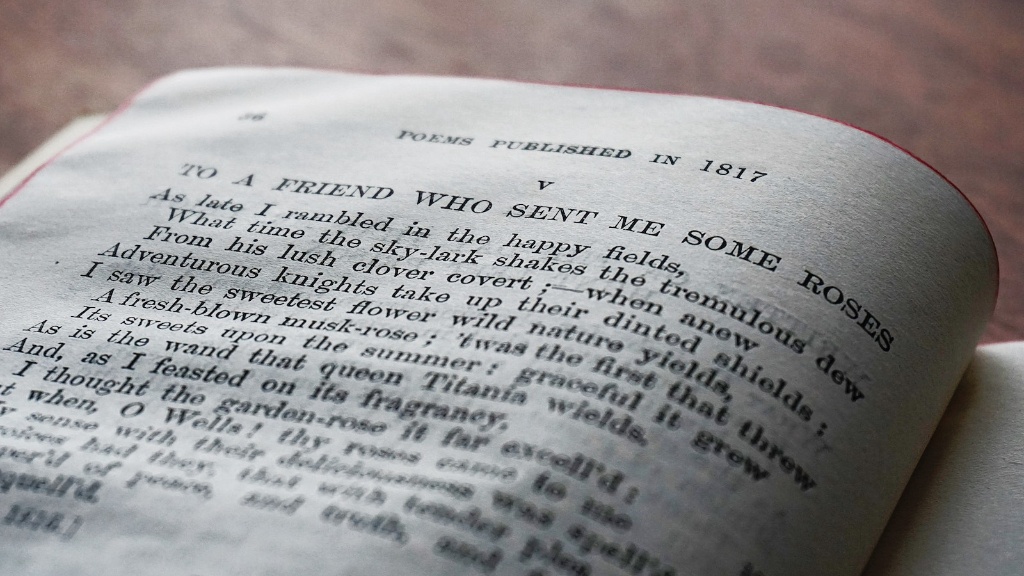It’s no secret that attempting to understand poetry can be overwhelming. Even experienced readers are often challenged by the complexity and layers of meaning in poems. For those who find it a struggle, the task of unravelling poetry can seem impossible. One way to approach understanding poetry is to break down the elements of the poem, bit by bit. From this, readers can explore the language, imagery and structure of the poem gradually, to build a greater understanding and appreciation for it.
The language of a poem is a great place to begin. Understanding how to interpret words in a poem is essential. It’s important to be aware of the multiple meanings of words, as well as the sound and intonation they may imply in the poem. At times, it may be necessary to look up definitions to understand the whole context of what is being discussed. Every word should be treated like a clue that helps readers figure out the poet’s intent.
Imagery can also have an impact on the poem’s overall meaning. Imagery is when poets use descriptive language to spark the imaginations of their readers. Paintings, photographs, television shows and films are all forms of imagery that can be used as an aid to understanding a poem. Images and symbols can often point to deeper and more complex layers of meaning than can be noticed at first. By using imagery, poets give their readers a way to experience their poems on a deeper level.
Overall structure can also offer clues for understanding poetry. Poems often have a structure that follows a fixed pattern of rhyme, meter, stanza lengths and so on. Understanding the structure can provide important information as to the theme, tone and messages of the poem. It may even be possible to use certain patterns in the poem as a tool for unlocking hidden messages or meaning. As readers become more familiar with different types of poetry, the easier it will be to recognise the structure of a poem.
There are also other methods of approaching the task of understanding poetry. Reading it aloud can often be helpful, as it can bring out features of the poem that may otherwise go unnoticed. Carefully studying the visual details of a poem can also be useful. Visual details such as spaces, indentations and unusual use of capitalisation can provide valuable clues as to the poet’s intentions. Discussing the poem with peers can also help to shed more insight on the poem, as it gives readers a different perspective.
Finally, it may be necessary to simply sit with a poem for a while without attempting to dissect it or understand it. Reading poems that are pleasing can often be enjoyable in itself, even if the reader is not quite sure what it means. It’s important to not rush understanding, as it can be a gradual process. Even if there’s parts that are not immediately clear, as long as the reader continues to work through the poem slowly and patiently, it will eventually become easier to understand.
Understand Poetry with Context
Context is critical in understanding poetry. Every poem can be considered an individual story with its own unique elements. For this reason, a reader should approach the poem with an open mind. Rather than judging the poem at first glance, it’s important to consider the poem’s meaning in relation to its context. This includes the time period and cultural background of the poem, as well as the poet’s individual style and life experiences.
One way to make a poem more relatable and easier to understand is to think of it as a conversation. Taking time to consider the implications of each phrase and the connections between different lines within the poem can help make it clear how the poem’s individual parts fit together to make a whole.
Comparing the poem to other works can also give readers a greater understanding of the poem. For example, if a reader discovers the poem was written in response to another poem, it may help to provide context and unlock different layers of meaning. Additionally, looking for inspiration from other places can provide a new perspective. From film, music, art and other literary works, many pieces of poetry can be explored from different angles.
Using Different Mediums to Unearth Meaning
It’s easy to forget that all forms of writing may have a poetry-like quality. From novels and plays, to comic books and song lyrics, looking for poetic elements in pieces of writing in different genres can help to understand a poem better. These mediums may provide deeper insights into the poet’s thoughts and feelings, allowing the reader to better comprehend the poem’s true nature.
Additionally, a reader may find it useful to interact with a poem as if it were a living element of the world. Taking a physical approach to it can give tighter focus and provide easier access to the poem. Drawing or mapping out the poem’s elements can provide a better way to analyse the poem and break it down into its individual parts.
Though not a requirement, it might also be useful to research the life of the poet, to gain a greater understanding of their frame of mind. Many poets are influenced by their culture, society, and environment, and understanding the life of the poet may give more clarity to their sentiment.
Exploring Metaphors in Poems
Metaphors are an important element in poetry, as they often help to express complex emotions or describe difficult concepts. Metaphors in poems are often used to evoke sensations or feelings and to express an idea without using literal language. Understanding how to unravel metaphors in poems can be difficult. It’s helpful to think that poets often use metaphors as stories or comparisons, which can lead to greater understanding.
When trying to understand the meaning of a particular metaphor within a poem, it can be helpful to look for triggers. This means, considering what could have caused the poet to use a metaphor, as well as what effect the representation may have had on the poem’s reader. This can help to get to the heart of what the poem is saying, as metaphors can often point to a deeper and more meaningful explanation.
Using stories to understand a metaphor can also be helpful. Stories come loaded with cultural baggage and provide a better sense of context than simply looking at the words. Additionally, interpreting metaphors can often be a great exercise in looking to create a connection between the poem and the reader.
Engaged Reading with Poetry
Engaged reading is an important part of understanding a poem. It means engaging with the text and attempting to empathise with the ideas and concepts expressed. This can involve suspending judgement, as well as being open to potential interpretations and meanings of the poem. It’s important to remember that there is no one correct answer when it comes to understanding a poem.
Recognising the difficulty of understanding poetry is important. Different people will take away different things from a poem, and this is perfectly acceptable. In some cases, it can even be enlightening to look at what people have interpreted from a poem, in addition to one’s own insights. It can also be helpful to discuss the poem with other readers and to exchange different thoughts and perspectives.
These strategies can help make poetry a more enjoyable and accessible experience. While it can be daunting to attempt to understand longer and more complex poems, it’s important to take time to appreciate the efforts of its poet. Understanding poetry can be difficult but rewarding, and with some patience and dedication, a reader can often unlock the deeper meanings of a poem.
